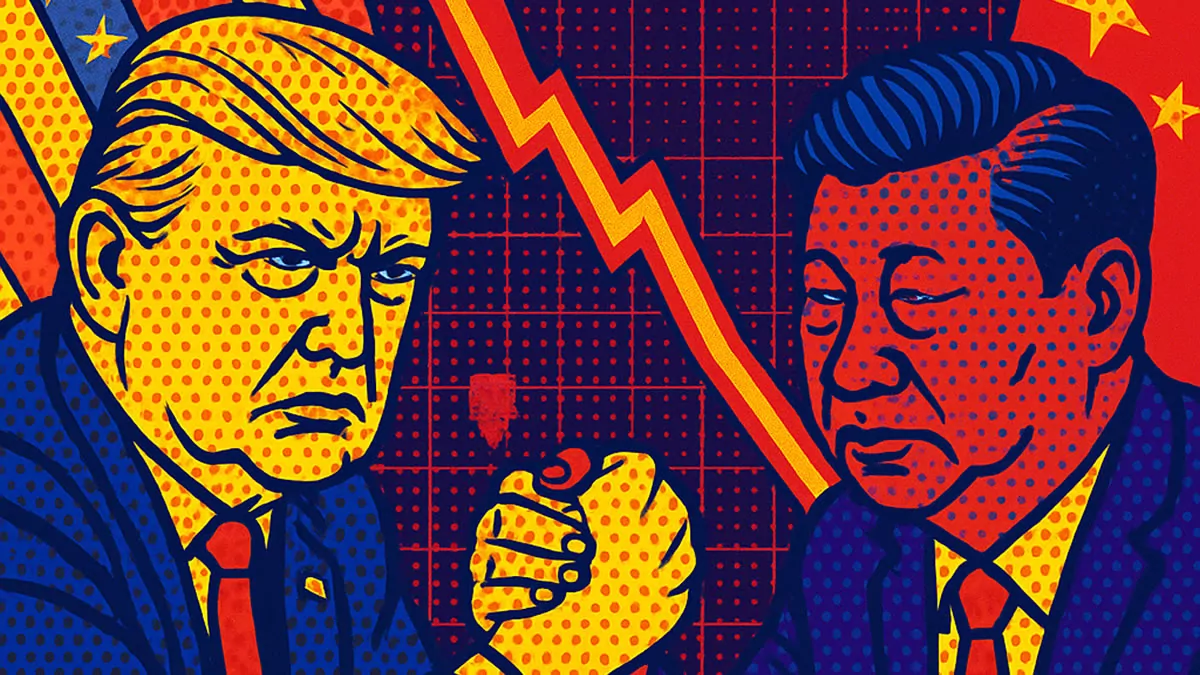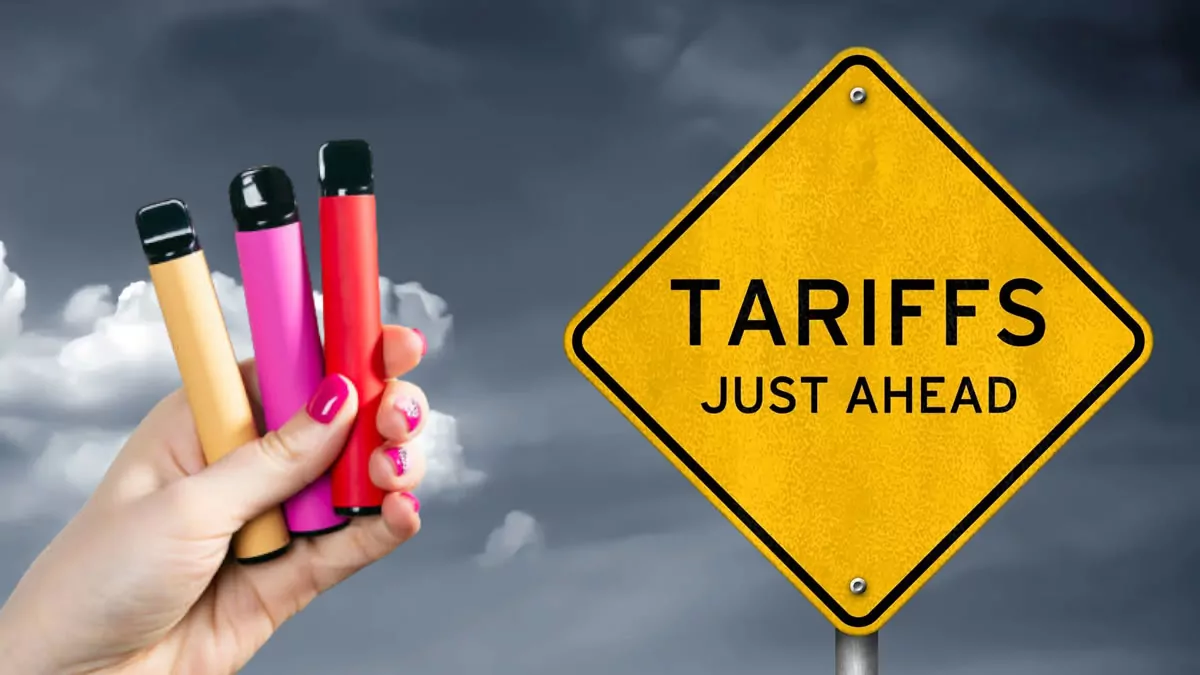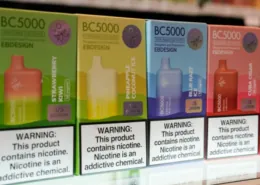US-China Vape Tariffs (>100%): Navigating the Impact on Industry & US Consumers
The complex web of international trade significantly influences the global vaping market, particularly the relationship between the United States and China. China stands as the dominant manufacturing powerhouse for the vast majority of vape hardware—devices, pods, coils, batteries—that fill the shelves of American vape shops and convenience stores. However, recent dramatic escalations in US trade policy have imposed tariffs on these crucial imports that soar past the 100% mark, creating a seismic shockwave felt throughout the supply chain and ultimately, by consumers at the checkout counter. While the exact tariff percentage became a moving target during its rapid implementation in mid-2025, with figures reported as high as 170%, the fundamental reality is clear: any tariff substantially exceeding 50% acts as a formidable economic barrier, fundamentally altering the dynamics of trade. This guide delves into the implications of this extreme tariff environment, exploring what it means for vaping industry professionals in both the US and China, and how it directly impacts the choices and costs facing American consumers.
Understanding the Tariffs: Crossing the 50% Threshold
The current tariff situation didn’t appear overnight but is the result of layered trade actions accumulating over several years. Understanding its composition helps clarify its impact.
The Tariff Breakdown and Why >50% Matters
The total tariff rate applied to Chinese vape imports is a combination of historical and recent levies. It includes the original 25% tariff imposed under Section 301 back in 2018, which remained in place across administrations, layered with a substantial new baseline tariff implemented in April 2025 after a series of rapid-fire increases. While the specific final number fluctuated wildly during its announcement phase (reportedly hitting a peak combined rate of 170%), the critical point for anyone involved is the crossing of the 50% threshold.
Why is exceeding 50% so significant? A tariff, simply put, is a tax on imports. When that tax exceeds the original cost of the goods themselves, it fundamentally breaks traditional business models. It means the cost simply to bring the product into the country is more than the cost to manufacture it. This creates an almost insurmountable economic hurdle, effectively disrupting or halting normal import activities. Therefore, whether the final rate settled at 100%, 150%, or 500%, the practical consequence for trade flow and business viability remains largely the same: severe disruption.
Historical Context: The Road to Extreme Tariffs
This didn’t happen in a vacuum. The journey to these >100% tariffs involved several key steps, reflecting ongoing trade tensions:
- March 2018: The Trump administration imposes the initial 25 percent tariff on a wide range of Chinese goods, including vape devices and components, citing unfair trade practices related to intellectual property and technology transfer under Section 3011.
- Post-2018: The Biden administration maintains and extends the existing 25 percent tariff on Chinese vape products.
- February 1, 2025: An executive order adds a 10 percent tariff on Chinese goods, bringing the total for vapes to 35 percent2.
- March 4, 2025: Another 10 percent increase takes effect, pushing the total tariff rate to 45 percent.
- Early April 2025: The Trump administration announces a new, near-universal 34 percent tariff on Chinese imports (effective April 9), which would have brought the vape total to 79 percent.
- April 9, 2025 (Rapid Escalation): In a series of swift policy changes, the new tariff levy is first increased to 84 percent (totaling 129 percent), then further raised to 105 percent (totaling 150 percent) within the same day.
- Mid-April 2025: The administration establishes the new baseline tariff at 145 percent, which, when combined with the existing 25 percent levy, results in the current 170 percent total tariff rate. These later increases were framed partly as responses to retaliatory tariffs from China.
This history highlights an unstable policy environment, making long-term planning incredibly difficult for businesses reliant on this trade corridor.
Source: Data compiled by Bloomberg
Note: Chinese tariffs on US goods before April didn’t apply to all goods and were applied at 10% or 15%.
What Products Are Affected?
These tariffs cast a wide net, impacting nearly all personal electronic vaporizing devices and their essential components manufactured in China. This typically falls under specific Harmonized Tariff Schedule (HTS) codes (like 8543.70.9930 and 8543.70.9940). In practical terms, this means disposables, pod systems, mods, tanks, coils, and batteries designed for vaping are all subject to these extreme import costs.
- HTS Code 8543.70.9930: Covering “Personal Electric Or Electronic Vaporizing Devices With Substances Containing Nicotine.”
- HTS Code 8543.70.9940: Covering “Personal Electric Or Electronic Vaporizing Devices, Others.”
Impact on the Vaping Industry: Facing Strategic Crises
For businesses deeply embedded in the vape supply chain, these tariffs are not just numbers on a page; they represent significant operational and strategic crises demanding immediate and often difficult responses.

Challenges for US Importers, Brands & Distributors
Companies based in the US that rely on importing finished vape goods or components from China face a cascade of problems. The most immediate is the skyrocketing landed cost of inventory. A >100% tariff instantly makes products vastly more expensive to bring into the country, obliterating established pricing structures and severely squeezing profit margins, if not eliminating them entirely. This places immense financial strain on businesses, particularly smaller importers and distributors who may lack the capital reserves to weather such a shock. Cash flow becomes a critical concern.
Consequently, supply chain disruption is inevitable. Standard import volumes may become economically unfeasible, leading to potential inventory shortages and broken links with long-term Chinese suppliers. This forces an urgent re-evaluation of sourcing strategies. The pressure to diversify manufacturing away from China intensifies dramatically. Companies are now actively exploring and accelerating moves to alternative hubs, primarily in Southeast Asia (like Malaysia or Indonesia), which may offer more stable trade conditions. However, this diversification is itself a major undertaking, requiring significant investment, time to establish quality control, and navigating new regulatory landscapes. Furthermore, the challenge is compounded by the fact that even if assembly moves, sourcing critical sub-components like advanced batteries or chipsets might still rely heavily on Chinese manufacturers, potentially keeping some tariff exposure within the supply chain.
Complicating matters further is the limited viability of large-scale domestic US manufacturing as a quick alternative. While avoiding tariffs is appealing, the rigorous, costly, and time-consuming Premarket Tobacco Product Application (PMTA) process required by the FDA for any new domestic manufacturing operation remains a formidable barrier.
Consequences for Chinese Manufacturers & Exporters
The impact reverberates back to the manufacturing source in China. Factories heavily reliant on the US market face a potential collapse in demand for tariff-affected products. Orders may dry up as US clients can no longer afford to import the goods, leading to idle production lines and significant revenue loss. While US partners might plead for lower ex-factory prices, the sheer scale of the tariffs (often exceeding the manufacturing cost) means that even substantial price cuts from the Chinese side offer insufficient relief to make the final product viable in the US market.
This situation forces Chinese manufacturers into difficult positions. They face intense pressure to diversify their client base, seeking new customers in other international markets less affected by such extreme tariffs. Some larger manufacturers might even consider supporting client relocation efforts by establishing satellite operations in tariff-friendlier countries (like Southeast Asia) to maintain relationships with key US brands moving their production. The disruption also affects suppliers further down the chain; manufacturers of specialized batteries, circuit boards, or even packaging materials within China see demand shrink as orders for finished goods decline.
Broader Industry Shifts and Concerns
Beyond individual companies, these tariffs risk reshaping the entire industry structure. The intense financial pressure could trigger market consolidation, as smaller importers, brands, or even retailers unable to absorb costs or secure alternative supplies are forced to close, leaving the market dominated by larger entities with greater resources or more diversified operations. The pervasive uncertainty and focus on managing costs might also stifle investment in innovation and new product development within the legal market, potentially leading to a less dynamic product landscape for consumers in the long run. Companies might also strategically shift focus towards product categories less impacted by hardware tariffs or those with perceived regulatory stability.
Price Transmission Through the Supply Chain:
- Importers to Wholesalers/Distributors: Increased landed costs will translate into higher wholesale prices.
- Wholesalers/Distributors to Retailers: Retailers will face significantly higher acquisition costs for inventory.
- Retailers to Consumers: To maintain margins, retailers will be forced to implement substantial price increases on vape hardware and potentially related products.
What This Means for US Consumers: Higher Prices, Fewer Choices
For the everyday vaper in the United States, the consequences of these >100% tariffs are felt directly, primarily through changes in price, availability, and the range of products on offer.

Brace for Significant Price Increases
There’s no easy way around it: when the cost for US companies to import vape devices more than doubles due to tariffs, those costs inevitably get passed on to the consumer. Think of tariffs as import taxes; businesses must recoup these massive tax increases to stay afloat. This translates directly to higher prices at the vape shop or convenience store counter. While the exact increase will vary by product and retailer strategy, it’s realistic to expect the retail price of many popular vape devices manufactured in China (especially disposables and pod systems) to potentially double or even more compared to what you paid before these extreme tariffs took effect. A $15 disposable might suddenly cost $30 or $35, making vaping a significantly more expensive habit.
This price shock directly impacts personal budgets. What was once a potentially more affordable alternative to cigarettes might now become a considerable weekly or monthly expense, forcing many users to reconsider their spending or consumption habits.
Navigating Reduced Availability and Variety
Beyond cost, consumers are likely to encounter issues with product availability. As imports slow down due to the prohibitive tariffs, shortages of specific brands or models that were previously common may arise. Your favorite disposable flavor or pod system might become harder to find as retailers struggle to restock items sourced from China.
Furthermore, the financial strain on brands means some may simply disappear from the US market altogether if they cannot find viable alternative manufacturing solutions quickly. This leads to reduced product variety and fewer choices for consumers. You might find yourself needing to switch brands or device types based not on preference, but simply on what remains accessible and relatively affordable on the shelf.
The Impact on Vaping as a Smoking Alternative
Many vapers use these products as an alternative to traditional cigarettes, often citing potential harm reduction and sometimes cost savings as motivating factors. The dramatic price increases caused by tariffs challenge this dynamic. If vape products become significantly more expensive, potentially approaching or exceeding the cost of cigarettes for some users, the economic incentive to switch from smoking or to remain smoke-free using vapes diminishes.
Public health discussions often involve vaping’s role in harm reduction. However, if cost becomes a major barrier, there’s a real concern that some price-sensitive former smokers might revert to combustible cigarettes. Similarly, current smokers considering switching might be deterred by the high entry cost of vape starter kits and the ongoing expense of devices under the new tariff regime.
The Rising Shadow: Increased Risk from the Illicit Market
A deeply concerning, yet predictable, consequence of making legal products prohibitively expensive is the strengthening of the illicit, or black, market. This poses risks to both consumers and the legitimate industry.
Why Extreme Tariffs Encourage the Black Market
The >100% tariffs create an enormous price chasm between legal, taxed vape products and illegal alternatives. Smuggled goods, counterfeits, or products made in unregulated facilities bypass these massive tariffs and domestic taxes, allowing them to be sold at significantly lower prices. This powerful economic incentive fuels demand for illicit products, especially among consumers feeling the pinch of high legal prices. The US already grapples with illicit vape sales; these tariffs pour gasoline on that fire, making the profit margins for illegal operators even more attractive.
Dangers for Consumers
Turning to the black market carries significant safety risks. Illicit vapes are produced outside of any regulatory oversight. They are not tested for safety or quality. Consumers risk exposure to:
- Unknown and potentially harmful ingredients (e.g., contaminants, improper solvents, vitamin E acetate).
- Incorrect nicotine levels (much higher or lower than labeled).
- Heavy metal contamination from poor quality hardware.
- Faulty batteries that pose fire or explosion risks.
Unlike legal products, there is no accountability or recourse if a black market vape causes illness or injury.
Harm to the Legal Industry and Public Trust
The illicit market directly harms legitimate businesses by stealing sales and undermining the legal framework. Furthermore, health scares caused by dangerous black market products often lead to negative headlines that unfairly tarnish the reputation of the entire vaping category, eroding public trust and potentially leading to even harsher regulations on legal products.

ECIGATOR
Ecigator is one of the well-known vape brands spun off from FM Technology Co., Ltd, it’s an ISO-certified disposable vape manufacturer for OEMs, ODMs, and OBM since 2010. The founder team comes from top firms with more than 10 years of experience in the vaping industry and has devoted thousands of hours to providing users with a better and better experience.
Future Outlook: Uncertainty and Potential Directions
The path forward for the US vaping market under the shadow of these extreme tariffs remains highly uncertain, dependent on several key factors.
The most significant factor is the future of US-China trade relations. Any significant de-escalation or negotiated settlement could lead to tariff reductions, potentially restoring some normalcy to the market. Conversely, continued or worsening tensions could see these tariffs remain in place indefinitely, solidifying the current disruptive environment. Businesses and consumers alike must keep a close eye on geopolitical developments.
The industry’s adaptation efforts will also shape the future. The speed and success of shifting manufacturing to alternative countries will determine the future availability and cost of legal products. This transition is complex and will take time. We may see continued market consolidation as companies struggle with the financial pressures.
Ultimately, consumer behavior will play a crucial role. How consumers respond to higher prices – whether by reducing consumption, switching products, seeking illicit alternatives, or returning to smoking – will dictate the long-term market size and composition.
The interplay between trade policy and FDA regulation also remains critical. A market constrained by both high import tariffs and strict domestic authorization requirements faces unique challenges that could limit product diversity and innovation for the foreseeable future. Finally, unless the underlying economic drivers change, the illicit market is likely to remain a persistent threat, requiring ongoing attention from enforcement agencies and posing continuous risks.
Conclusion: A Market Under Unprecedented Pressure
The imposition of tariffs exceeding 100% on vape products imported from China represents a watershed moment, placing the US vaping industry under unprecedented economic pressure and significantly impacting American consumers. While the exact percentage point became a blur during the rapid escalations, the reality of a tariff barrier substantially over 100% fundamentally alters the cost structure and viability of the established China-centric supply chain.
For vaping industry professionals in both the US and China, this necessitates radical strategic adjustments. US importers and brands face soaring costs and supply disruptions, forcing diversification efforts. Chinese manufacturers face collapsing US demand, pushing them to seek new markets or support client relocations. Resilience, adaptability, and careful financial management are paramount.
For US consumers, the tangible effects are sharply increased prices for vape hardware, potentially reduced availability of favorite products, and fewer choices on the market. This challenges the affordability of vaping, particularly for price-sensitive individuals, and complicates its role as a potential alternative to combustible cigarettes.
Critically, these extreme tariffs significantly amplify the dangers posed by the illicit market, creating strong incentives for unregulated trade that threatens consumer safety and undermines legitimate businesses. The future trajectory remains uncertain, heavily dependent on political decisions regarding trade policy. Until a resolution or significant adaptation occurs, the US vaping market will continue to operate in a fundamentally challenged and high-pressure environment.
Reference:
- A Guide to China’s Section 301 Tariffs: https://ustr.gov/issue-areas/enforcement/section-301-investigations/tariff-actions ↩︎
- Fact Sheet: President Donald J. Trump Imposes Tariffs on Imports from Canada, Mexico and China: https://www.whitehouse.gov/fact-sheets/2025/02/fact-sheet-president-donald-j-trump-imposes-tariffs-on-imports-from-canada-mexico-and-china/ ↩︎
- Cannabis and Vape Shop Workers Rank Happiest in Nation - July 31, 2025
- Richmond, VA, Restricts New Vape & Tobacco Shop Locations - July 31, 2025
- Study Finds Flavored Vape Bans Cut Vaping But May Slow Smoking Decline - July 31, 2025









